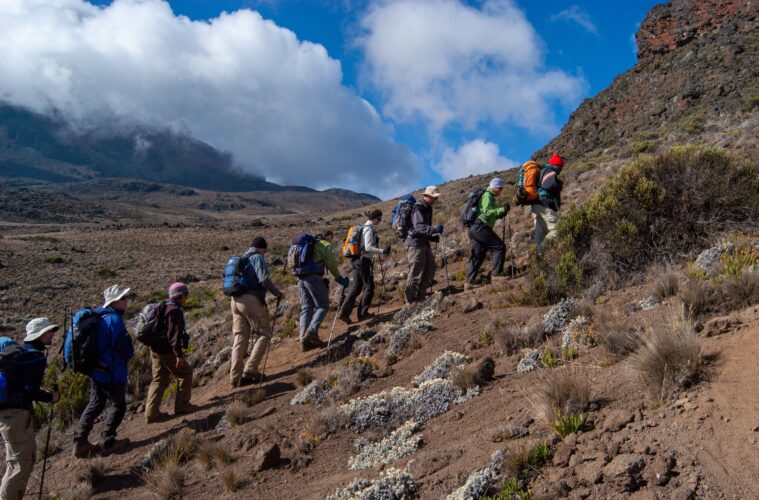If you’re planning your next grand adventure, then let me suggest a journey to Mount Kilimanjaro – but not for the reasons you may think. Now, as an experienced travel expert, the summit views may be the obvious enchantment, but I assure you, there’s much more to excavate. Particularly for all the nature enthusiasts out there, the assorted animals on Mount Kilimanjaro are an unmissable sight. Allow me to take you on a virtual safari in this article.
Habitat Overview: Lush to Lunar
While most people think of it as an immense snow-capped mountain in Tanzania, Kilimanjaro is surprisingly wealthy in terms of biodiversity. Thanks to varied altitudes and climates, different zones of life have developed, each both distinct and teeming in its own way. From the lower, thick rainforests filled with diverse bird species and primates, to the shrublands echoing a cacophony of rodents and elephants, Kilimanjaro offers a unique wildlife travel experience. But what particularly makes this journey unique, are the hardy creatures that dwell above the tree line, well into the Alpine Desert and moorland regions, over 11,000 feet above sea level!
Hardy Highlanders: Alpine Creatures
Blue monkeys and turacos may be entertaining in lowland forests, bushbabies, and hyrax in lower shrublands, but aren’t you keen to know what survives in the oxygen-thin, freezing realms of the high altitudes? Fascinatingly, mice, moles, and a few species of birds actually do! Yes, the unusual four-striped mouse and the Kilimanjaro mole rat are two examples of mammals that have made these inhospitable terrains their home.
Having adapted perfectly to the harsh environment, the mole rat thrives underground, away from piercing freeze while the mouse innovatively stocks up food during the brief summer. Even at these dizzying heights and piercing cold, these creatures thrive, telling thrilling tales of adaptation and survival.
Skyward Species: Birds of Mount Kilimanjaro
Gliding effortlessly, quite above the summit, are the avian species of Kilimanjaro. Though the human ascent may be a challenging multiple-day affair, birds like the Bearded vulture and Alpine chat whizz past climbers in an aerial display of freedom. The scarlet-tufted malachite sunbird, too, graces the moorlands with glimmers of color, largely unfazed by the altitude or cold.
Welcoming you: The tropical rainforests
Imagine stepping out of your tent in the foothills to begin your climb, greeted by the cacophony of the tropical rainforest, home to numerous Mount Kilimanjaro animals. Tracer vines hanging from moss-covered trees, the incredible smell of damp earth, and the air thick with the whispers of hidden creatures. Chattering colobus monkeys swing through the canopy in a display of agile artistry, while the precision pecking of woodpeckers echoes through the undergrowth.
The elusive Abbott’s duiker, a forest antelope which is a rare species can also be spotted here if luck favors you. This rainforest offers you the first taste of the biodiversity Kilimanjaro proudly hosts.
Into the Heath and Moorland
As you leave the rainforest behind and ascend the mountain, you enter the heath and moorland zone. The damp vegetation gives way to low bushes and tall grasses, with scattered blooms of everlasting flowers dotting the landscape. Here, the chirps and warbles anticipate welcoming one of my personal favorites, the malachite sunbird with its splendid colorful plumage.
Guest appearance: The Plains game
The foothills of Kilimanjaro, spilling into Kenya’s Amboseli National Park, are often frequented by the plains game. A heart-stopping moment might be to spot a herd of dust-covered elephants against the backdrop of this snow-capped mountain. If you find yourself at the right place and time, you might also encounter buffalos, elands, or even a lone majestic lion; witnessing this megafauna surely adds a thrill to the Kilimanjaro experience.
Celestial Observers: Nocturnal Mount Kilimanjaro Animals
Finally, as the nocturnal curtain falls over the Kilimanjaro landscape, a new world comes alive. Adapted to the dark, the senji, a type of four-striped grass mouse, scurries around the rocky slopes, while bushbabies – the cute yet elusive night primates – perform their vocal symphony.
Signing off as the Sun Sets
As our journey through the magnificent lands of the Mount Kilimanjaro animals concludes, it is undeniable: Kilimanjaro isn’t just a mountain. Its diverse terrain offers a unique set of dwelling areas for an incredible array of wildlife, much different from what you’d expect.
Meeting these wildlife wonders on the route, whom I like to think of as nature’s mountaineers, offers a different sense of achievement than reaching the summit alone. Each step, on this mountain or any other path, is an opportunity to discover something new, something extravagant and unexpected. And isn’t that the real essence of travel? So, until our next adventure, keep exploring, and keep learning! Because every trail has a tale, and each tale beckons a trail!
Published by HOLR Magazine.



